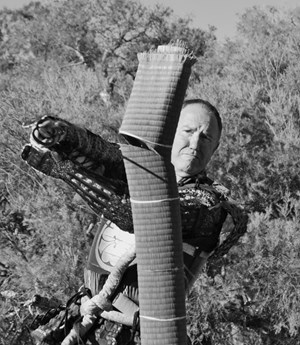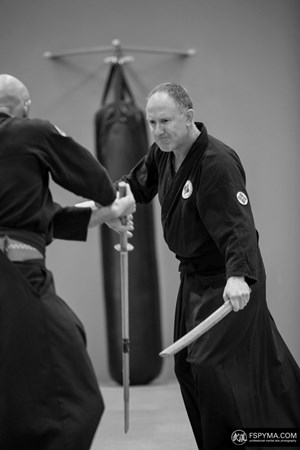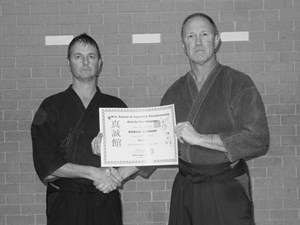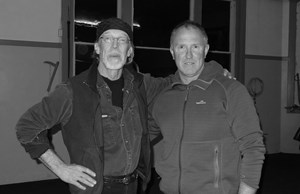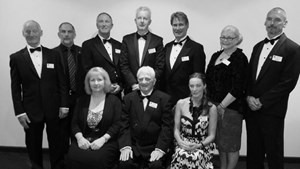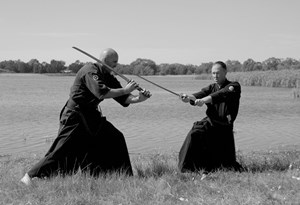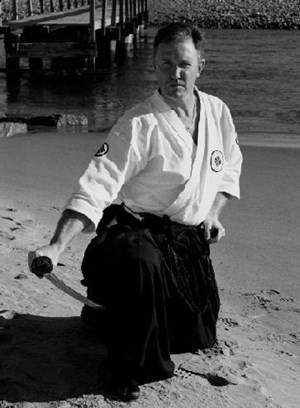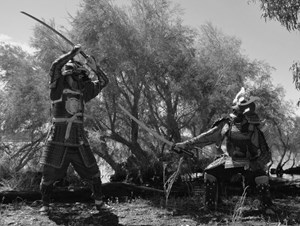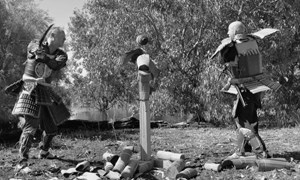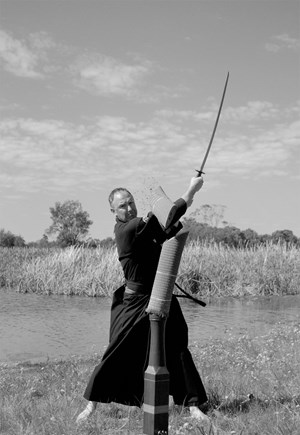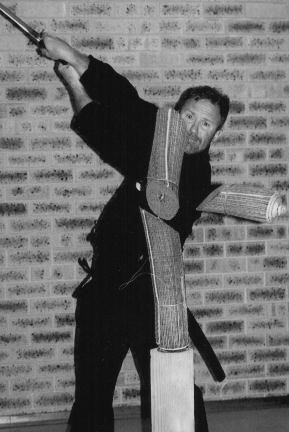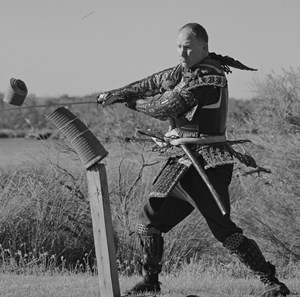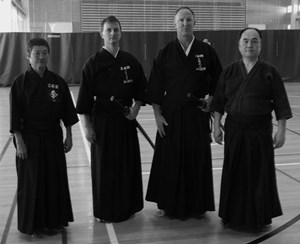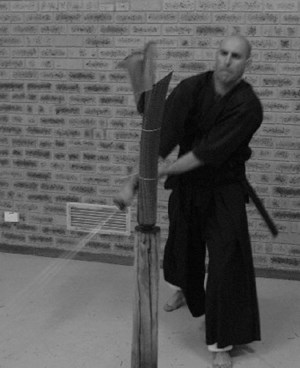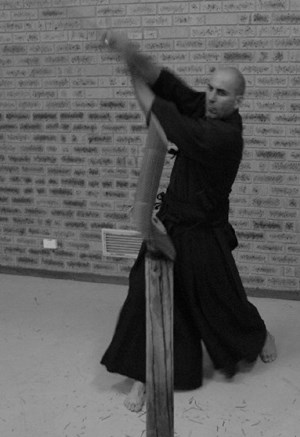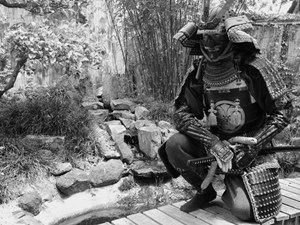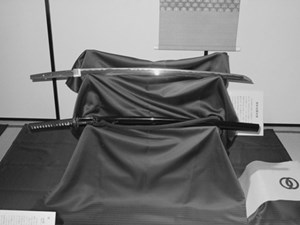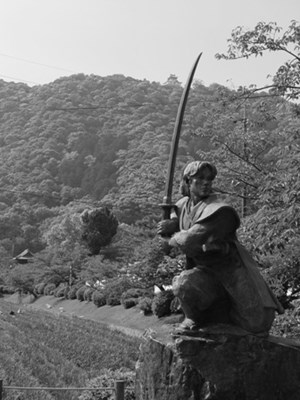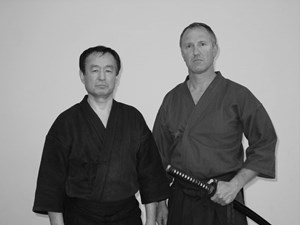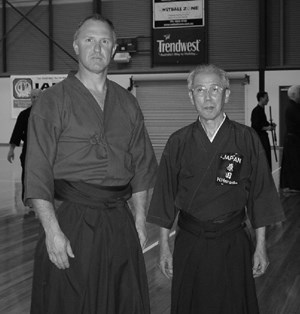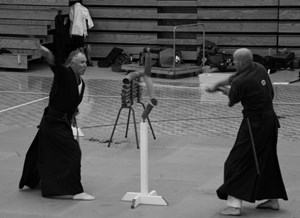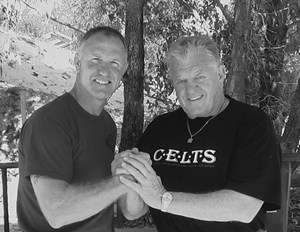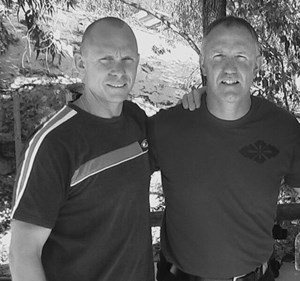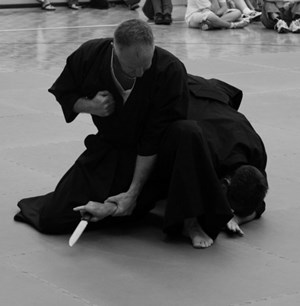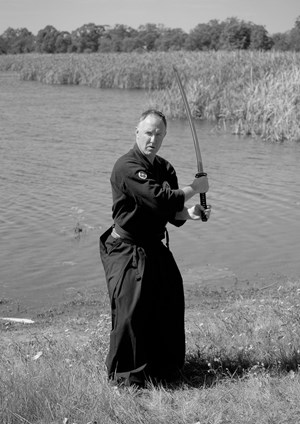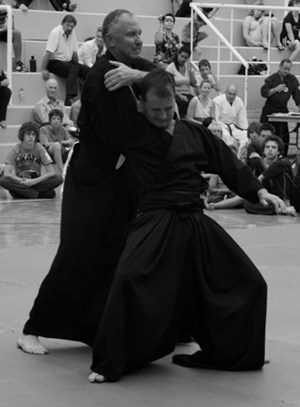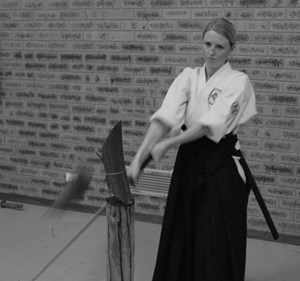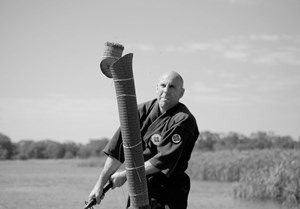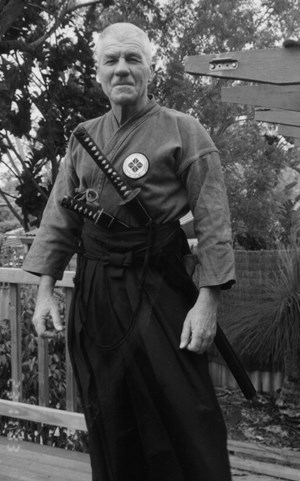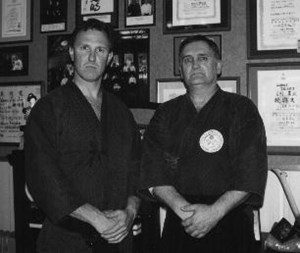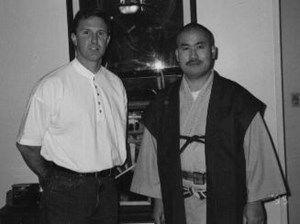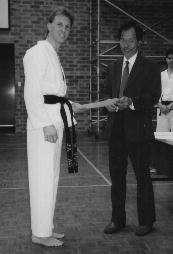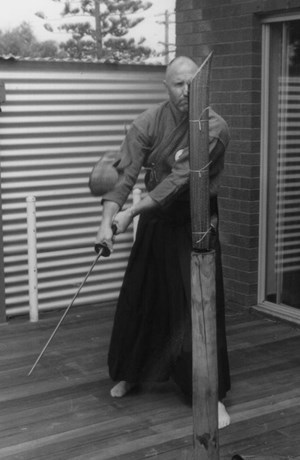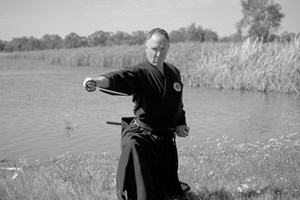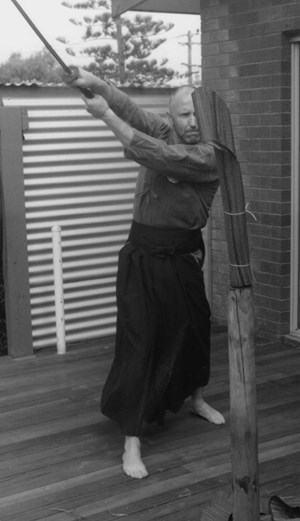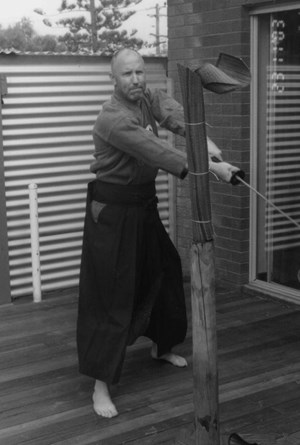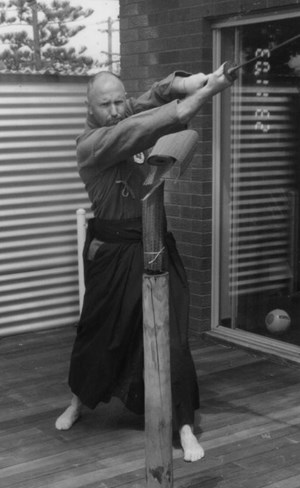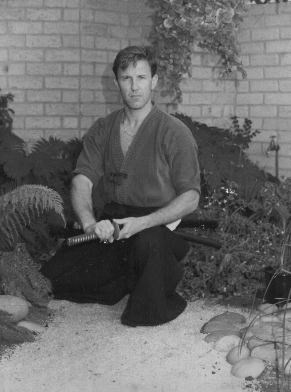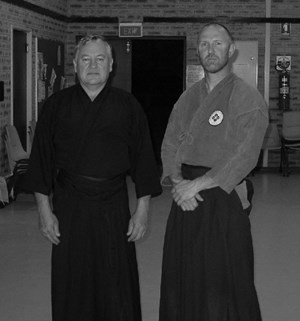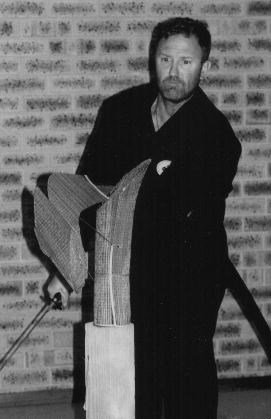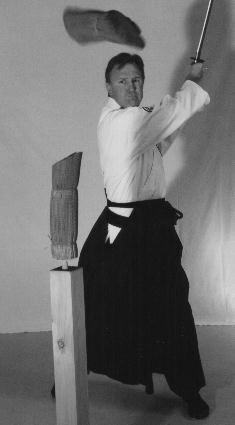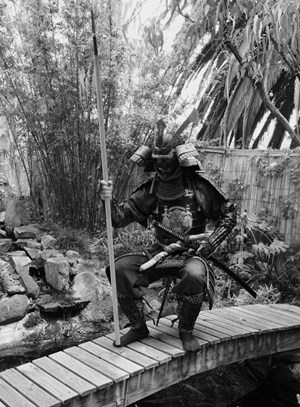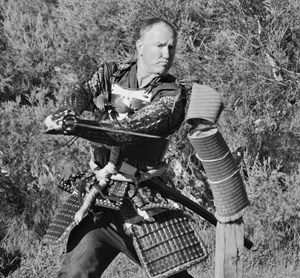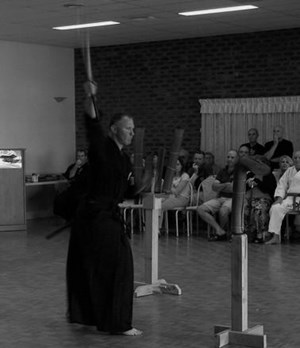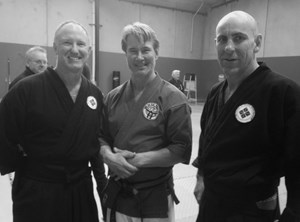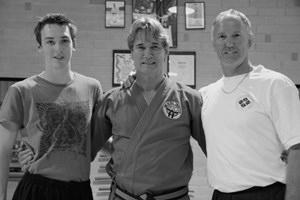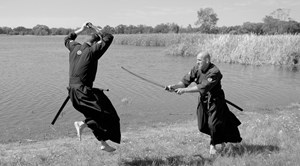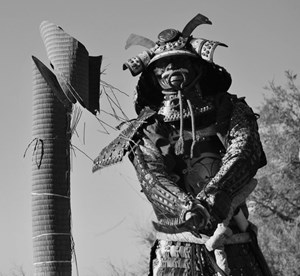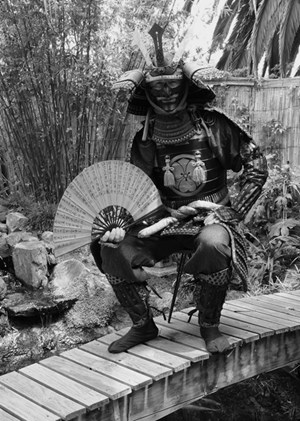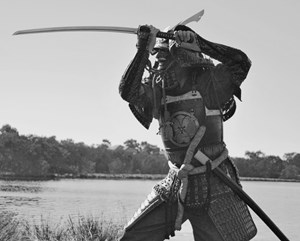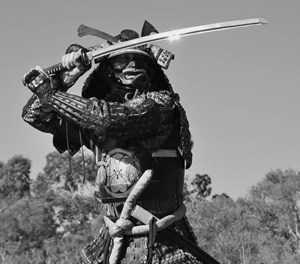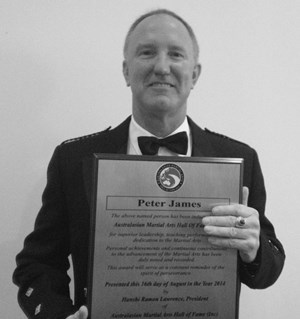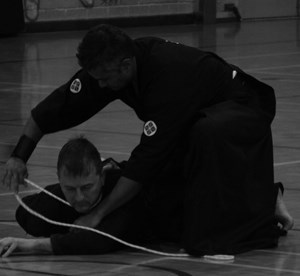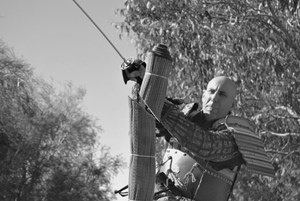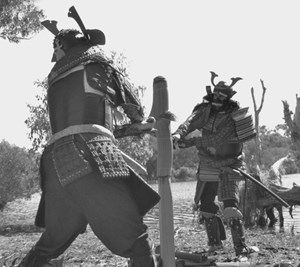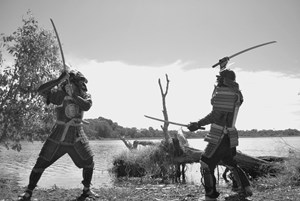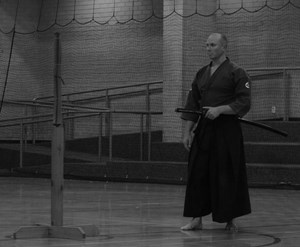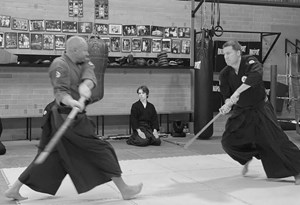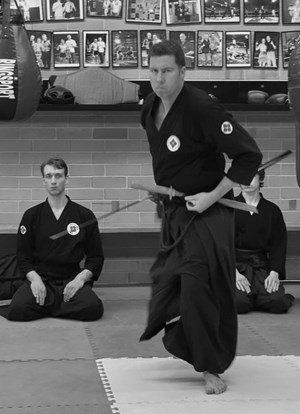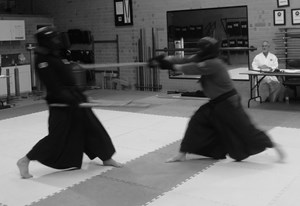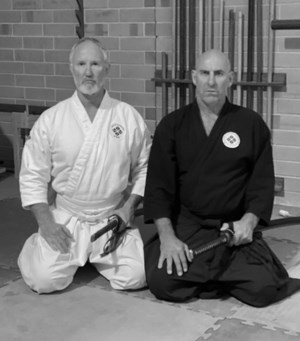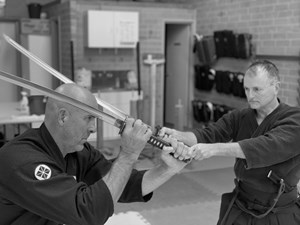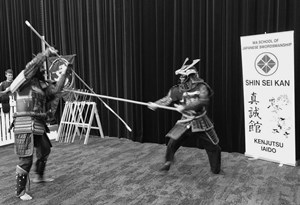The Sword Today
As an instructor in the art of Japanese Sword work (Kenjutsu), I have lost count of the number of people who have made statements such as "not much use learning that art" or "can't defend yourself with a sword today" or "not much call for that". Everyone is entitled to his or her point of view, but this kind of statement indicates a lack of knowledge of the martial arts. Indeed, an understanding and appreciation of the intent of the Martial Arts is necessary to understand why sword training still has a place in modern society.Japanese swordsmanship has its roots in pre-1600 Japan. After a thousand years of upheaval, the civil wars and the need for large standing armies of battled-trained soldiers ended. The last battle in Japan, the Battle of Sekigahara, brought Tokugawa Ieyasu to power as Shogun. The battlefield arts become diluted as warriors were no longer involved in open combat. They were never lost, as Japan still has a rich history of Martial Arts, but the intensity of these arts was lost since, in reality, they were not needed.
Kenjutsu is one of the true Martial Arts, as used by the military, along with archery, spear or horsemanship. It was used to keep a warrior alive in battle. Empty hand arts appeared much later and were derived from peasants who were not allowed to bear arms. As with soldiers today, empty hand was only the last resort in battle, and infinitely less effective than the vast array of weapons at the soldier's disposal. As a military art, Kenjutsu had real application in an age where failure to handle a weapon effectively meant certain and swift death. The techniques have been tried and proven over hundreds of years. What worked was passed on, what did not was discarded very quickly by those who saw the user die.
So what relevance have ancient Japanese military arts have in today's society and where do they sit with contemporary martial arts? In a word 'Attitude'. Attitude brings forth commitment, discipline, perseverance, values and focus. If you found yourself in a situation where you or your loved one's life were threatened and you needed to defend yourself, the correct mental attitude is most necessary, then physical ability. Ask anyone who has found themselves in a survival situation, at sea, in the desert, or in battle, mental attitude is what separated the survivors from those who perished. In everyday life the stresses are different, but the battles in peoples minds are just the same. Attitude separates success and failure in our world everyday.
Is fighting really what the martial art's are all about? It depends on the student and the times we live in. There are two aspects to any martial arts training, mental and physical. One cannot live without the other, although some people think and teach as though it can. Even with the most perfect technique a student who doesn't have the right mental attitude may not even raise a finger to fight when put in a fight situation. On the other hand someone without good fighting technique but the right attitude can not only apply that attitude in a fight situation, and probably defend themselves very well, but also has a real life skill. Mental training is a component of the martial arts that students can apply every second of everyday, not just against physical attack. I believe situations where mental training gained from martial arts can be used to improve your life are greater than the incidents of physical attack, unless you go looking for it. I always tell my students 'It's not whether you could or you couldn't, it's whether you would or you wouldn't'. This sums up my attitude to mental training in martial arts.
Students today treat martial arts as they treat any sport; they pick and choose, expect fast results and demand to be treated like a customer. They take their huge egos to instructors and demand black belts within months. From this they will take away the physical attributes of the martial arts, but gain none of the mental training. They will brag to their friends about their technique but will have missed the most precious learning of all. When it comes to the 'moment of truth' their physical training may fail them. That moment of truth presents itself in many different ways, none of them any less threatening. I have a good friend, Wayne, who described to me how he nearly drowned while diving last summer; he attributed his life to 15 years of Martial arts training, not because he physically fought, but because he mentally fought and won.
If we consider at the full gambit of modern martial arts, we see a wide range of styles from many different countries. We cannot say that any one is better than the other, because after all, it is the mental attitude of the exponent that makes the art devastating or weak, not the individual arts.
Swordsmanship can provide the student with all the strategies for fighting - empty hand or with weapons. The techniques in martial arts are universal. Whether you use a weapon or empty hand, there are universal lines and principles that are followed. In addition to technique there is speed, timing, and distance. Master these things and you have mastered the physical aspects of any sport. In that way, swordsmanship is like any other martial art. However, the mental training, an integral part of sword training for over 700 years, represents the edge.
So what does swordsmanship offer the student today? Hard, disciplined and mentally demanding training, that will lead the good student on a path of self mastery and indomitable attitude. In short, real life skills that we all need everyday.
